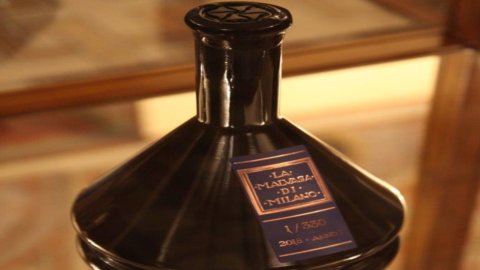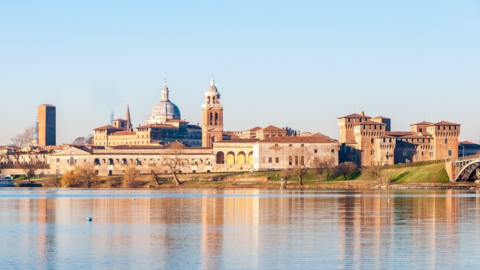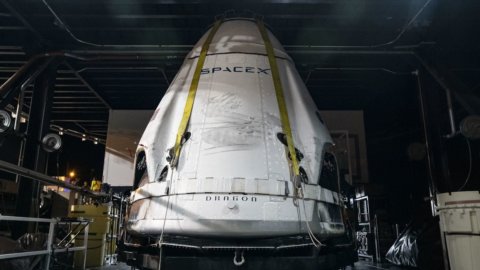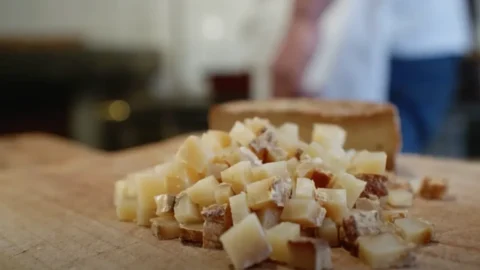Leonardo da Vinci's wine: Malvasia di Milano, obtained from the first harvest of Malvasia di Candia Aromatica replanted in 2015 in the garden of Casa degli Atellani, thanks to research conducted by scholars of the Faculty of Agricultural Sciences of the University of Milan, under the guidance of Professor Attilio Scienza, the world's leading expert on the DNA of the vine, it does good or rather it does good.
Three bottles of the precious Malvasia Milano went up for auction to support the projects of the Matilde Tettamanti research laboratory, for the diagnosis and monitoring of genetic anomalies in Italian leukemia children.
The charity evening organized by the Maria Letizia Verga Committee, thanks to the hospitality of the Castellini Baldissera family and the Piero Portaluppi Foundation, was held at Casa degli Atellani.
The first 3 bottles (significantly numbered 79/330 – year of birth of the Verga Committee, 94/330 – year of birth of the Tettamanti Foundation, 15/330 – year of birth of the Verga-Tettamanti Hospital) and assigned respectively to 8 thousand, 10 thousand, 10 thousand, for a total collection of 28 thousand euros.
The entire proceeds of the event were donated to the genetic passport research project which aims to identify the genetic profile of every child with leukemia and lymphomas, in order to study a more targeted personalized therapy and therefore offer an opportunity for healing more from the disease.
In 1498 Leonardo da Vinci received from Ludovico il Moro who intended to repay him for having finished the Last Supper, painted in the refectory of the nearby Basilica of Santa Maria delle Grazie a vineyard in the large area then included between the basilicas of Santa Maria delle Grazie and San Victor. The only part of the vineyard that has survived history is today right at Casa degli Atellani.
But Leonardo will be forced to leave Milan two years later, when the duchy is invaded by the troops of the King of France who defeat and take Ludovico il Moro prisoner. Years later, in 1506, Leonardo will agree to return to Milan only on condition that he regains possession of his vineyard; which will be returned to him without the artist "habia to suffer the expense of just one soldo".
When in 1513 he left the city again to move first to Rome and then to his last home in France, Leonardo made sure that the vineyard was looked after by his most faithful servants. He receives the fruits of his land in France and again in his will he allocates half of the vineyard to his faithful servant Giovanbattista Villani and the other half to his favorite pupil, Gian Giacomo Caprotti, known as il Salaì, who had built a house here .
In 1524 Salaì dies, assassinated at the Vigna. After four centuries of oblivion, it was only at the beginning of the twentieth century that the great architect Luca Beltrami, author of the reconstruction of the Castello Sforzesco and an important scholar of Leonardo, obtained the exact position of the Vineyard, and photographed it. A century ago a building speculation transformed the area and reduced the vineyard to a small plot of land, at the end of the garden of Casa degli Atellani. After the war, it will be covered by the rubble of the bombings that hit the house and Santa Maria delle Grazie in 1943.
Thanks to the will of the Piero Portaluppi Foundation and the property of Casa degli Atellani, under the High Patronage of the President of the Italian Republic, the Vineyard was reborn in 2015. And in 2018 the first harvest of Leonardo's Vineyard gave its fruits, which were then vinified in underground terracotta amphorae according to the medieval method; “La Malvasia di Milano”, the precious wine produced, was then collected in 330 Decanters, reproduced by Alberto Alessi for Cascina Eugenia on the drawing by Leonardo da Vinci present on folio 12690 of the Windsor Code.





